Not only does the Franklin Institute have a walk-through replica of the human heart and a sculpture of Ben Franklin the size of a dinosaur, but it also has a colorful history that predates its instatement at 20th and Race Sts. by more than a century.
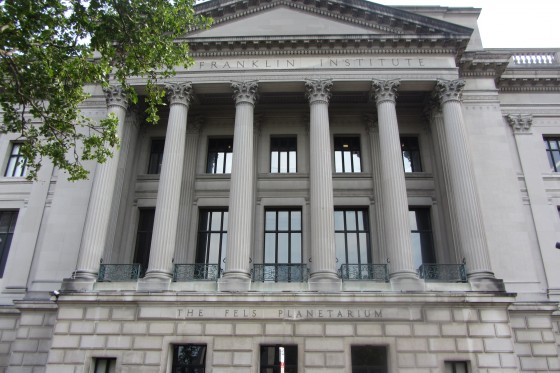
Current shot
Indeed, the Institute predates the Benjamin Franklin Parkway itself by nearly a century. Founded in 1825, its first president was James Ronaldson, whom we referenced in a previous post for his construction of a cemetery where the Palumbo Recreation Center now stands. As the image here below, taken from Hexamer & Locher’s 1860 Philadelphia Atlas shows, the science education and development center first opened its doors on 7th Street, just south of Market.
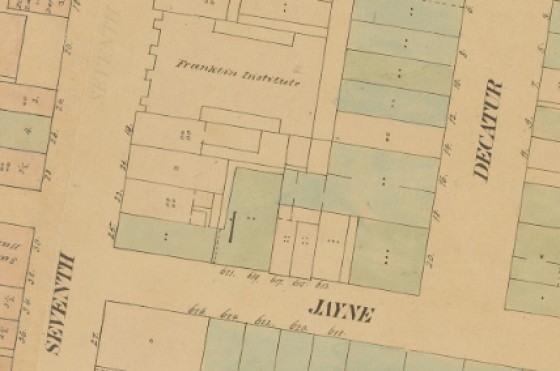
Original location
Among its many historical distinctions, The Franklin Institute racially integrated in 1870 and hosted Nikola Tesla’s 1893 wireless telegraphy exhibition in 1893. The image here, borrowed from the Philadelphia Department of Records, shows the Franklin Institute in 1895. The edifice may seem familiar, and not just because it looks like an Indiana Jones set piece. Today, the building at 15 S. 7th Street houses the Philadelphia History Museum at the Atwater Kent.
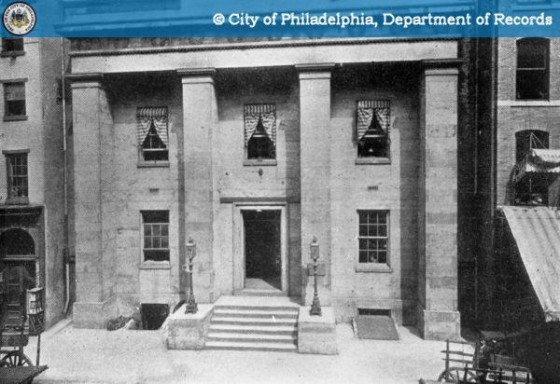
Fmr Franklin Institute building
As this structure’s history unfolded, a separate history unfolded on the plot of land that would become the Franklin Institute’s new home in 1934. According to this image taken from Samuel L. Smedley’s 1862 Philadelphia Atlas, the space bound by 20th, 21st, Race and Winter Streets, had a number of simultaneous occupants in the century prior. The most signficant of these occupants was the Pennsylvania Institute for the Instruction of the Blind.
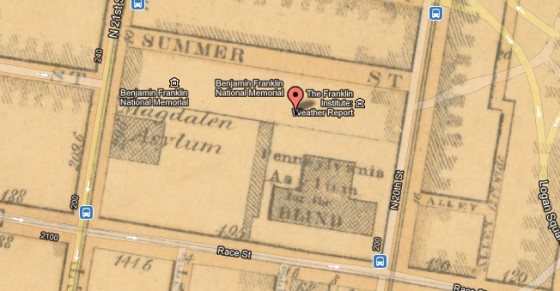
Current location, former occupants
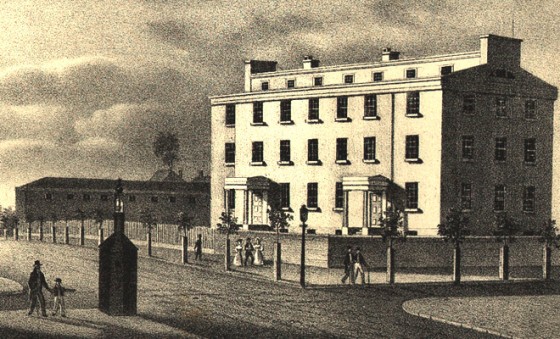
Image of the Institute for the Blind
The Institute is shown here in a portrait provided by the Bryn Mawr College “Places in Time” photo project. The year of the depiction is unspecified but the nature of the institution itself is somewhat self-explanatory. Less self-explanatory was its nearby neighbor, the Magdelen Society, whose Asylum housed ‘fallen women’ and employed Episcopalian reform strategies as a remedy for prostitution. The building is pictured in this print ad, which the blog Fondly, Pennsylvania dates to 1910. In 1918, the Magdalen Society became the White-Williams Foundation, a notable inner-city educational scholarship group today headquartered on Broad Street.

Magdalen Society
Not to suggest that the Magdalen Asylum wasn’t popular in its own way, but the Franklin Institute’s relocation, even at the height of the Great Depression, would help to make the Museum District a draw for visitors of all ages.
Check out our previous post on expansion plans for the venerable museum.
–David Tomar
